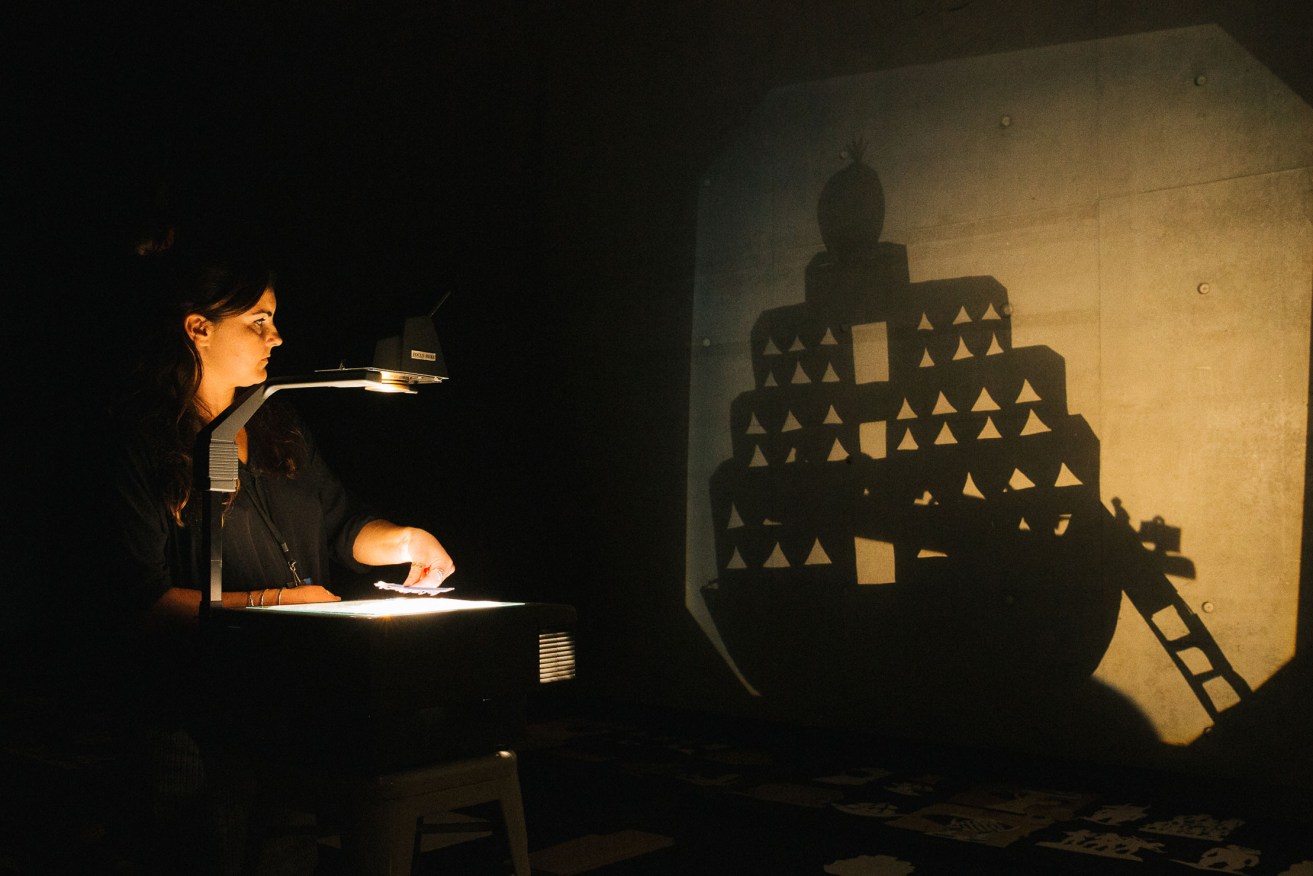OzAsia review: Perahu-Perahu
The ancient Javanese art of shadow-play meets the modern world head on in Perahu-Perahu, a captivating exploration of humanity’s relationship with the ocean and the rich seafaring history linking Indonesia and Australia.


Perahu-Perahu is a fusion of the ancient and modern, East and West.
Using hundreds of hand-crafted cut-outs, Indonesian-Australian artist Jumaadi creates a breathtaking world peopled with humans and animals, gods and monsters. Fusing the old and the new in both form and music, Perahu-Perahu reinvents this ancient genre of storytelling to craft a modern, clear-eyed view of the history and mythology of the Indonesian archipelago.
Spot-lit before an enormous screen are two overhead projectors, reminiscent of lectures and lessons before the conquest of power-point. To the side, a bewildering array of musical instruments. Some are easily recognised – drum kit, electric guitar, violin. Others are mystifying, as if a gamelan orchestra had to make an emergency exit, leaving behind many of their pieces.
The screen is illuminated, the puppeteers and musicians take their places; only four musicians and three shadow makers for the staggering array of instruments and cut-outs. The opening song and introduction by Sawung Jabo (musician/co-composer) and Jumaadi (co-director/principal artist) are in Bahasa but as soon as the shadows begin to dance across the screen, all worries about language and meaning evaporate.
The shadows are mesmerising. Walking a fine line between intricacy and naïve art, the two-dimensional figures are brimming with character and life. Humans haul loads over mountainous landscapes. There are rainforests and plantations. Cities and villages. Weddings and war. And through it all, the sea – the ever-present character linking every story.
Wayang kulit is an ancient art, the shadow-stories traditionally peopled with characters from myth and legend. Jumaadi has reinvigorated this time-honoured form, his shadows dancing tales of the modern world, weaving a spellbinding mythology from tales of boats lost at sea carrying refugees, the colonial rape of the land and the revenge of the ocean for humanity’s misuse.
The dual projections are cunningly handled, the shadow-makers (Jumaadi, Maki Ogawa and Julia Westwood) passing their shadow-characters seamlessly between screens, playing with scale, focus and the occasional flash of colour.
The audience is taken on a journey across time and place, folklore and reality. From the opening story of refugees fleeing war only to be fished from the ocean like a tragic human harvest, we are taken back to the Dutch invasion in 1621 with their graceful tall ships and graceless plundering.
We see a beautiful rainforest, the intricacy of the tree-shadows simply breathtaking. Birds, boars and tigers abound, until they are joined by humans with their gigantic saws. The shadows dance a history of the natural and social world, pillage and upheaval, cruelty and pandemic – yet beauty, humour and whimsy are ever-present. Small asides about durians lighten the tale of the capitalist exploitation of Indonesia’s natural bounty. Mythological creatures take their revenge for human greed and despoliation of the sea.
All the while, the music carries the stories. Far more than a sonic backdrop, the clever composition and glorious performances by Sawang Jabo, Mick Stuart, Kyati Suharto and dramaturg How Ngean Lim are intrinsic to the storytelling. Seamlessly interweaving the traditional with the contemporary, the gongs and bells of Indonesian percussion ratchet up the tension or provide ominous undertones while the western-style drums and electric guitar lift the audience into the celebration of the joyous moments.
Perahu-Perahu is as exquisite and full of movement, mystery and pathos as the world that inspired it. A fusion of the ancient and modern, East and West, this performance perfectly characterises the OzAsia Festival.
Perahu-Perahu is being presented until October 30 at the Adelaide Festival Centre’s Space Theatre as part of the 2021 OzAsia Festival.
Read more OzAsia reviews and stories – including InReview’s festival picks – here.




